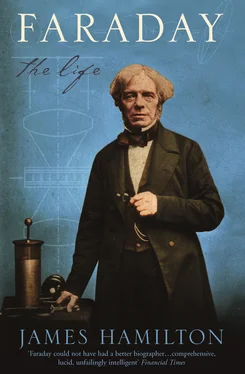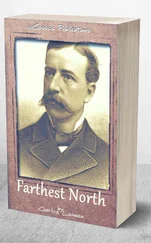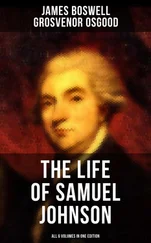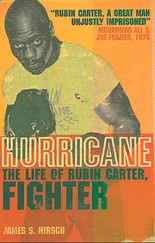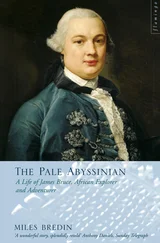It took them five days to reach Lyons. Faraday writes of travelling hastily, faring meagrely and arriving ‘fatigued and at a late hour’ at one of their stops on the way. 3It was a difficult and uncomfortable trip, to say the least. But even after the ecstatic experiences of Fontainebleau there were more natural joys for them to witness. They set off before dawn, without knowing where they would sleep that night. ‘These dark hours however have their pleasures, and those are not slight which are furnished at such hours by the memory or the imagination,’ wrote Faraday. As the sun went down in the Burgundian hills they saw crepuscular rays, or ‘Zodiacal light’, as Faraday described it. ‘It appeared as an emanation of light in enormous rays from the sun into the expanse. There were about seven rays diverging upwards and sideways and ascending many degrees into the heavens. They continued for nearly half an hour …’. 4
The horses splashed through the waters at the edge of the Loire as they galloped down to Lyons in the starlight. In the gorges of the Auvergne they walked ‘for some miles through these wild valleys and passes’, to rest the horses and for Sir Humphry to investigate the extinct volcanoes. 5This was one of the main purposes of this part of the journey – Napoleon himself wanted Davy to study volcanoes. 6‘We seem tied to no spot, confined by no circumstances, at all hours, at all seasons and in all places,’ Faraday wrote, using words which have a distinct echo, remarkable in a young non-conformist, of a significant passage in the Anglican Holy Communion service.
We move with freedom. Our world appears extending and our existence enlarged. We seem to fly over the globe rather like satellites to it, than parts of it, and mentally take possession of every spot we go over … We have lived hard this last day of the year. 7
But a few days into January 1814 they began to feel the welcome of the warm south. The weather gradually lost its icy grip, and their spirits rose at these first hints of a Mediterranean climate. Sir Humphry reached for his pencil:
The air is soft as in the month of June
In northern climes; a balmy zephyr blows,
And nothing speaks of winter’s harshest month
Save that the trees are leafless … 8
Looking about the Rhône near Lyons, he saw the landscape with the eye of an eighteenth-century connoisseur:
… and all the tints
Which human art bestows upon the scene
Are chaste as if the master-hand of Claude
Had traced upon the canvass their design.
They first saw the Alps from outside Lyons. Mont Blanc ‘was readily distinguished’, Faraday writes, giving the facts as he saw them:
It appeared as an enormous isolated [?] mass of white rocks. At sunset as the light decreased, their summits took a hundred varying hues. The tone of colouring changed rapidly as the luminary sank down, became more grave, at last appeared of a dull red as if ignited, and then disappeared in the obscurity, until fancy and the moon again faintly made them visible. 9
Sir Humphry, however, put his first view of Mont Blanc in his own poetic way:
With joy I view thee, bathed in purple light,
Whilst all around is dark; with joy I see
Thee rising from thy sea of pitchy clouds
Into the middle heaven … 10
They were heading for Montpellier, where Davy knew there would be a good supply of seashore plants and sea creatures that might be rich sources of iodine. When they reached the town, eleven days after leaving Paris, Faraday climbed to the Place Peyrou, the highest point. From there he had ‘a clear unsullied view of the beautiful and extensive landscape. From this spot I could see around me the Alps, the Pyrenees, the Mediterranean and the town as well as the country in the near neighbourhood.’ 11
They remained a month in Montpellier. Sir Humphry disappeared into the hinterland and to the sea’s edge to look for sources of iodine, and presumably he took Faraday with him, though the Journal is not clear about this. They must have gone together on a four-mile walk to Mont Ferrier, an extinct volcano, which had blown a huge ball of basalt for two miles when it erupted in deep geological time, and this had become a small mountain in its own right. By now the volcano had become a settlement, and gave evidence to suggest that the earth had been formed through the heat of volcanic activity. Faraday and Davy were both attracted by the olive and pine trees: ‘the pines are short but airy’, Faraday noted. Davy, however, went much further, and the day after their visit to Mont Ferrier composed thirty-one lines of verse to ‘The Mediterranean Pine’:
Thy hues are green as is the vernal tint
As those fair meads where Isis flows along
Her silver floods …
From this poetic description Davy moves into the ancient past, describing places and events in world history on which the pine has cast its shade – the teaching of Socrates and Plato, Greek democracy, Roman virtue, the teachings of Christ and the wanderings of the Jews.
There is a powerful energy crossing the gap between Faraday’s approach to what he is seeing, and Davy’s. The natural distance between enthusiasm and experience, pupil and teacher is palpable. Writing as they do in such different ways about the same landscapes, the same views, the same daily experiences, even the same kind of tree, suggests that during the conversations that must have taken place on Faraday and Davy’s walks – even if they were broken by the effort of the walk, or stilted by the gap in status, age and social position – there was also a growing fault-line in attitude, laying down early markers of the distance and distaste that later grew between them. At the moment, however, the distance was small, and for Faraday, if not for Davy, the ideas that flew from one to the other were like electric sparks passing between two separated wires.
While Sir Humphry picked over the Mediterranean flora, Faraday made his own wanderings about Montpellier. The weather had taken a turn for the worse, but even so Faraday was very much happier in Montpellier than he had been in Paris: ‘The shops are pretty, and many well-furnished and kept. The markets seem busy places, the coffee houses well frequented. The inhabitants are respectable and I have found them very good natured and obliging. The weather alone is what we did not expect it to be.’ 12
He had time on his hands once again, and he writes of pacing the aqueduct at the Place Peyrou to discover its length, 792 of his paces. 13Here is another example of Faraday’s enthusiastic concern for facts, dimension, physical reality and record emerging yet again, as it did in the notes he took of Tatum’s and Davy’s lectures, and in his accounts of the continental journey so far. But as Faraday was rambling about pacing the antiquities and Sir Humphry was gathering plants, Montpellier was gearing up for war. There was a straggling resident army, a fort above the town, and some hot-headed inhabitants. Their enthusiasm to resist the oncoming armies of the Duke of Wellington was consuming and patriotic. Nevertheless, Michael Faraday, an innocent abroad, did not seem to sense the dangers. On the Esplanade he noticed the pillar surmounted by Napoleon’s eagle and the gilded letter N, but dismissed it as ‘ostensibly placed as an embellishment, but really intended to produce a political effect’. 14He even took the extraordinary risk of walking around the fort, which was full of soldiers, while the cannon were firing – ‘I do not know what for, nor could our host tell me.’
‘The stroll around the ramparts was pleasant,’ he writes disarmingly, ‘but I imagine that at times whilst enjoying myself I was transgressing, for the sentinels regarded me sharply, and more particularly at least I thought so as I stood looking at one corner, where from some cause or other the fortifications were injured.’ 15But nobody challenged him, and he had a wonderful view. After his rash behaviour when confronted by Napoleon’s semaphores at Montmartre, it was just as well he did not take out his notebook and sketch at Montpellier.
Читать дальше
